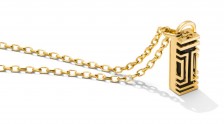Getting Gender Design Right
Today, it’s far too common for companies to create beautiful and interesting products without a real consideration for why they’re important to consumers or how they will actually fit into their lives. This is especially prevalent when designing for women, but it also happens fairly frequently when designing for men. Too many companies fall into the old trap of simply applying aesthetic treatments to new products – for women, the old way used to be to “shrink it and pink it” – or, they’re ignoring market demand for a certain type of product altogether.
That’s why we get inspired when we see companies and brands break the mold and look more closely at people’s needs, desires, and values in order to create the most meaningful products for both women and men. In a series for AIGA’s Design Envy blog, we’ve selected five of these inspirational brands – two for men, two for women and one unisex – that we think are doing a great job rebelling against “traditional” gender stereotypes and creating terrific products and product experiences for both genders.

Disrupting the Shaving Experience for Men: Harry’s
For years, Gillette and Schick owned 85% of the men’s shaving market, forcing men to choose between “over-priced, over-marketed razors that disrespect [their] intelligence, and low quality, cheap razors that disrespect [their] face.” The co-founders of Harry’s thought it was time to evolve the experience and offer men a more sophisticated, yet cheeky, shaving alternative at a fraction of the price.
Through its online model, and recent purchase of Feintechnik, the company and factory that produces its blades, Harry’s is moving toward complete vertical integration, which will enable it to maintain lower costs, iterate new designs, and get shaving products into consumers’ hands more quickly. Harry’s online approach also allows it to learn more about customers and their shaving needs and behaviors, which will easily translate into unique, future products and services. Its simple and elegant branding is nicely contrasted by its digital communication style that conveys a sense of humor with a dash of irreverence.
We love that Harry’s knows that not all men want the same thing out of a shave and offers them, with no disrespect, the non-mass market experience, yet affordable shaving choices they deserve. From the business model that enables the right price to the personality that brings the brand to life to the handsomely designed razors, Harry’s is the whole package, completely disrupting the traditional shaving market.

Wearable Technology Made by Women for Women: MEMI Smart Bracelet
MEMI is an iPhone-compatible smart bracelet that discretely vibrates when you receive important phone calls, text messages and calendar alerts. Intended for women with purse-bound phones, MEMI allows women to actually unplug while staying connected to the people that matter most. According to creator Leslie Pierson, MEMI isn’t trying to get women more plugged into their phones but instead, help them focus more on moments they care about while stripping away distraction. It’s about unplugging, just enough, while still having peace of mind that those who need you can still get through.
It’s exactly what makes MEMI special and a shining example of a wearables company doing things right.
While tech companies often create beautiful and interesting products, they far too often gloss over why it’s important to consumers and how it will actually fit into a person’s life. This is especially prevalent when designing for women. If a tech company doesn’t understand how a product fits into a woman’s life, the product is probably not going to resonate with them. MEMI is one of the first wearables to really understand women’s needs and wants. Recognizing many women wear jewelry rather than “devices,” MEMI created something that puts equal emphasis on function and fashion, and, most importantly, adds real value to their lives.
MEMI recently knocked it out of the park with a successful Kickstarter campaignand is expected to formally hit the market in August. Another wearables for women that we love? Ringly–for many of the same reasons we love MEMI.

A Nike Fantasy Shop: Purple Unicorn Planet
Emily Hodgson and Emilie Riis love sneakers, or trainers, as they’re known in London, but were frustrated by the fact that many of the coolest designs are made in men’s sizes only. So they decided to do something about it, launching Purple Unicorn Planet, a fantasy shop created to inspire Nike to make trainers for men available in women’s sizes, too.
As Riis told Fast Company: “Trainers are unisex shoes and have been for awhile. But it seems we are still stuck in an outdated view on what kinds girls and boys, respectively, should wear. Girls don’t just want pink, purple, or banana yellow trainers.”
We agree.
Too often, companies simply apply aesthetic treatments to new products for women–the old way used to be to “shrink it and pink it”–or, as in the case of trainers, ignore the market demand altogether. We think Purple Unicorn Planet is a fun, playful way to bring attention to the types of products women really want, in the styles they desire.

Unisex Beauty Products for Teens: Sam Farmer
When he started shopping for deodorant for his two teenaged children, Sam Farmer noticed that all brands went to market with names like “Play It Sexy” and “Enticing” in pink, pouty bottles for girls and “Control” and “Extreme Power” in steel grey or fierce, red packaging for boys. Infuriated that these brands were promoting and enforcing gender–not to mention, sexual–stereotypes, he decided to take matters into his own hands.
He went back to school, studied cosmetic science and created a line of unisex beauty products. The Sam Farmer brand celebrates simplistic, gender-neutral packaging with a mild white tea scent that is popular with both boys and girls. The products are honest about what they are intended to do, and what is in them. Claiming he was, “fed up with not knowing who is responsible for a product or faceless call centres,” he named the brand after himself and even lists his phone number on the website.
We love that this dad won’t settle for letting big brands market and enforce stereotypes. He keeps it simple and focused on the hygiene needs of young teens as a whole, rather than as discrete gender groups. Sam Farmer proves that we don’t need hyper-differentiated designs and products for the two genders, especially when those designs end up being a caricature of reality.

A Better Wedding Band For Active Husbands: McWhinney Designs
Tech designer Jeff McWhinney wondered why women tend to wear their wedding bands more than men–and then set out to innovate in an area that hadn’t seen change in decades. He noticed that traditional men’s rings not only look boring, but are often impractical for bicycling, golfing, climbing, running or anything active. They’re simply too large, difficult to remove when playing sports and operating machinery, and lack the level of style we’ve come to expect in women’s jewelry. However, as McWhinney told Fast Company: “Guys don’t want a blingy diamond on their ring. It’s just not our thing. What we do want is something that is functional, well-made, and kinda trick so we can show it off to our buddies.”
His response: a practical twist on the traditional wedding ring that fits the lifestyles of active men. His titanium rings boast a cool clamping design that not only enables wearers to remove the ring during critical moments, but also imparts a style that’s uniquely masculine. The function leads directly to its elegant form.
We really like that McWhinney took the time to pay true attention to what men want–and need–in order to design a piece of jewelry that they can be proud to wear and fits naturally into their lives.
You can find the entire series at Design Envy.
This series of articles was written by Nathalie Collins and Kristi Elliot-Heitman.
Images via harrys.com, hellomemi.com, purpleunicornplanet.com, samfarmer.co,mcwhinneydesigns.com





